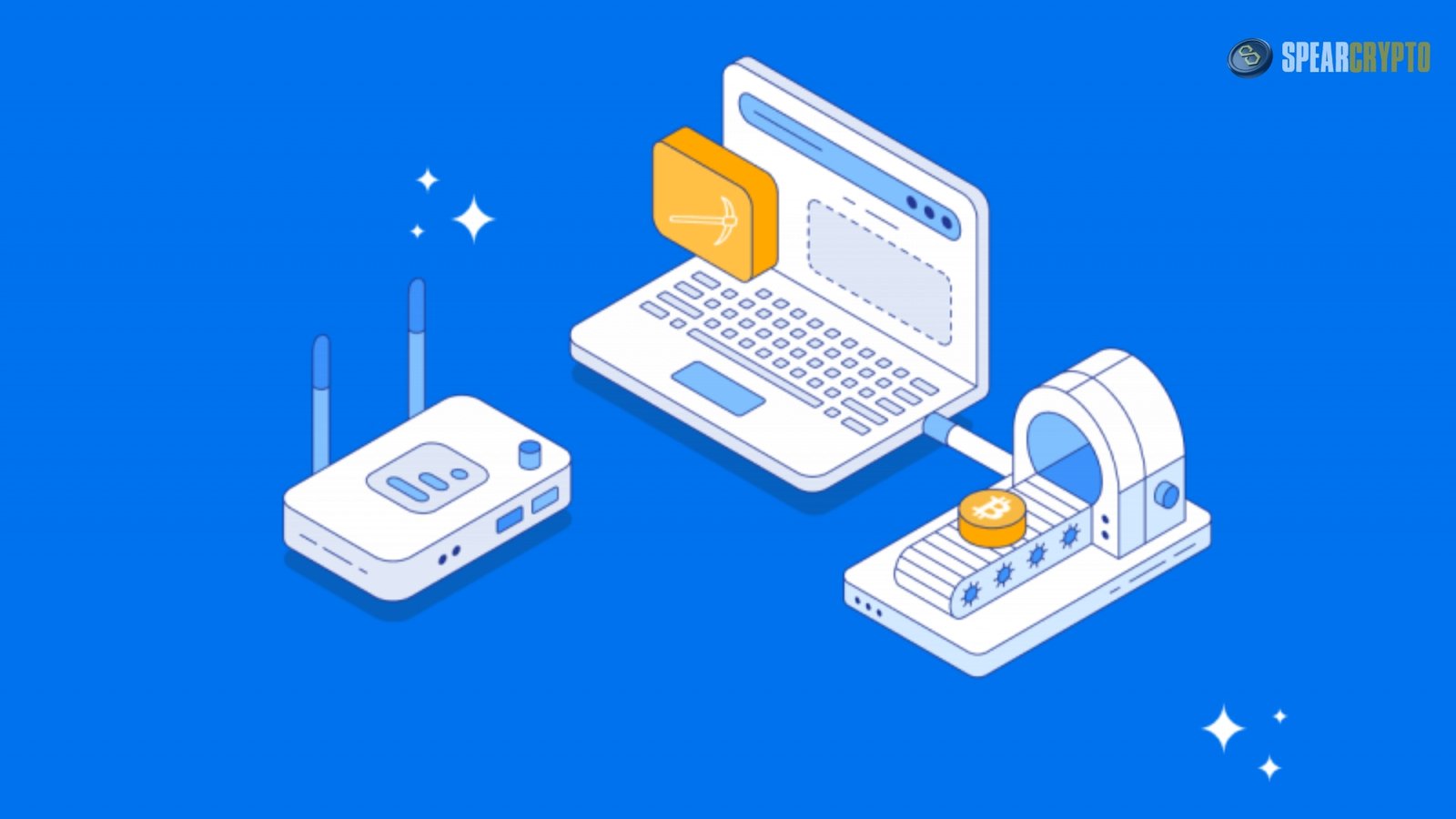
Cryptocurrency mining, often called mining, is the process by which transactions for various forms of cryptocurrency are verified and added to the blockchain. This decentralized public ledger underpins crypto assets like Bitcoin and Ethereum. Mining is also the method through which new cryptocurrency tokens are created. While some enthusiasts dive into the world of mining, hoping to make a quick profit, the reality of crypto mining is complex and influenced by numerous factors such as equipment costs, energy consumption, and the underlying algorithm of the cryptocurrency being mined.
In this comprehensive guide, we will explore the fundamentals of crypto mining 101, the hardware and software required, its economic and environmental impact, and some of the risks involved. Whether you are curious about the process or considering venturing into mining yourself, this article will provide a detailed overview of the essential aspects of crypto mining.
What is Crypto Mining 101?
Cryptocurrency mining verifies transactions on a blockchain network and adds them to a public ledger. Miners are rewarded with newly minted cryptocurrency tokens, such as Bitcoin, for verifying these transactions. Mining is crucial for maintaining the decentralized nature of blockchain networks, ensuring the security and validity of transactions without the need for central authority or intermediaries like banks.
Think of mining as solving a very complex mathematical puzzle. Miners compete with each other to solve these puzzles, and the first one to solve it gets to add a new block to the blockchain and is rewarded with cryptocurrency. The process not only facilitates transactions but also introduces new coins into circulation.
How Does Crypto Mining Work?
To understand how crypto mining works, let’s break down the process into a few key components:
Blockchain Overview
At the core of cryptocurrency mining is the blockchain—a decentralized ledger that records all transactions across a network. Each block in the blockchain contains a list of recent transactions and a reference to the previous block, forming a chain.
Proof of Work (PoW)
Mining most cryptocurrencies, like Bitcoin, relies on a consensus algorithm called Proof of Work (PoW). PoW requires miners to solve complex cryptographic puzzles to add a new block to the blockchain. Solving these puzzles involves computing a 64-character output hash that matches certain criteria defined by the network. The hash results from combining the transaction data in the block with a random number called a “nonce.”
This process requires significant computational power, and only the miner who finds the correct hash first gets rewarded. This is why mining can be highly competitive and resource-intensive, with miners often pooling their resources in mining pools to increase their chances of earning rewards.
Mining Difficulty
As more miners join the network, the difficulty of solving these cryptographic puzzles increases. Bitcoin, for example, automatically adjusts its difficulty level every two weeks to ensure that new blocks are added approximately every 10 minutes, regardless of the number of miners. This mechanism maintains the security and integrity of the blockchain.
Mining Rewards
In addition to the transaction fees miners earn from verifying transactions, they also receive a block reward. This reward is the newly minted cryptocurrency issued to the miner who successfully adds a new block. For Bitcoin, the block reward started at 50 BTC and has since undergone several “halvings,” the reward is cut in half every 210,000 blocks (about every four years). As of 2024, the reward stands at 6.25 BTC per block.
Types of Mining
Not all cryptocurrencies use the same consensus mechanisms, and there are several different types of mining techniques depending on the specific cryptocurrency and network design. Below are the primary methods used in crypto mining:
CPU Mining
This is the earliest form of cryptocurrency mining, which uses a computer’s central processing unit (CPU) to solve complex puzzles. CPU mining was once profitable for Bitcoin in its early stages, but as the difficulty increased, CPU mining became inefficient and was largely replaced by more powerful methods. Today, CPU mining is mostly used for smaller cryptocurrencies or as a hobby for those who cannot afford more advanced hardware.
GPU Mining
Graphics Processing Units (GPUs) are more powerful than CPUs and are commonly used in mining for cryptocurrencies like Ethereum. GPU mining can handle multiple tasks simultaneously and is much faster at solving cryptographic puzzles. This method is still popular due to its efficiency and relatively low barrier to entry compared to more specialized hardware.
ASIC Mining
Application-Specific Integrated Circuits (ASICs) are specialized machines designed solely for mining specific cryptocurrencies like Bitcoin. ASICs are far more powerful and efficient than CPUs or GPUs, making them the dominant hardware for mining Bitcoin. However, ASICs are expensive, consume significant electricity, and are not easily upgradable, making them less accessible to everyday users.
Cloud Mining
Cloud mining offers an alternative for those who want to mine cryptocurrencies without investing in hardware. In cloud mining, users pay a company to rent mining hardware and use its computing power to mine cryptocurrencies. The user receives a share of the profits based on their rented computational power. However, cloud mining is often criticized for having low profit margins and being susceptible to scams, so users should proceed cautiously.
Staking (Proof of Stake)
While not technically “mining” in the traditional sense, Proof of Stake (PoS) and its variations like Delegated Proof of Stake (DPoS) are becoming more popular as alternatives to Proof of Work. Instead of using computational power to validate transactions, PoS allows users to “stake” their cryptocurrency as collateral to validate new blocks. Validators are selected based on the amount of cryptocurrency they’ve staked, and in return, they receive rewards. Ethereum, one of the largest cryptocurrencies, has transitioned from PoW to PoS as part of its Ethereum 2.0 upgrade.
Getting Started with Crypto Mining
For those interested in getting started with cryptocurrency mining, here are the basic steps:
Choose Your Cryptocurrency
The first step is to decide which cryptocurrency you want to mine. Bitcoin is the most well-known cryptocurrency, but it requires significant investment in specialized hardware and consumes much energy. Other cryptocurrencies like Ethereum, Litecoin, or Monero may be more accessible to new miners.
Select Your Mining Hardware
Once you’ve chosen a cryptocurrency, you must invest in mining hardware. The hardware you choose will depend on the type of mining you plan to do. For example, if you want to mine Bitcoin, you’ll need an ASIC miner. If you’re mining Ethereum, you can use a GPU.
Install Mining Software
Mining software connects your hardware to the cryptocurrency network and handles the process of solving cryptographic puzzles. Several different software options depend on your hardware and the cryptocurrency you’re mining. For example, CGMiner is a popular option for Bitcoin, while Ethminer is commonly used for Ethereum.
Join a Mining Pool
As a solo miner, the chances of solving a block are very low due to the high difficulty of modern cryptocurrency mining. Joining a mining pool allows you to combine your computational power with other miners, increasing your chances of earning rewards. Pool members share the rewards based on the amount of work they contribute.
Secure Your Wallet
Before you start mining, you’ll need a cryptocurrency wallet to store your rewards. A wallet can be a software program (hot wallet) or a hardware device (cold wallet). Hot wallets are convenient but more susceptible to hacking, while cold wallets offer more security since they store your cryptocurrency offline.
Calculate Profitability
Mining is an investment, and profitability is a major consideration. You’ll need to account for hardware costs, electricity consumption, and the current value of the cryptocurrency you’re mining. Several online calculators can help you estimate your potential profits by inputting your hardware’s hash rate, power consumption, and electricity costs.
The Economics of Crypto Mining
Mining can be highly profitable, but it also comes with significant costs. Understanding the economics of mining is critical before making any investment:
Electricity Costs
One of the most significant expenses for crypto miners is electricity. Mining requires a lot of computational power, which consumes much electricity. The cost of electricity varies by region, so it’s essential to calculate whether mining is financially feasible based on your local energy rates.
Hardware Costs
The initial cost of mining hardware can be substantial, especially for ASIC miners. While GPUs are more affordable, they are still a significant investment. Additionally, hardware becomes obsolete over time as mining difficulty increases and more efficient machines enter the market.
Block Rewards and Halving
As mentioned earlier, block rewards decrease over time through halving. This directly impacts the profitability of mining. For example, when Bitcoin’s block reward was halved from 12.5 BTC to 6.25 BTC in 2020, the income for miners was effectively cut in half. Miners need to stay informed about upcoming halvings and plan accordingly.
Cryptocurrency Market Value
The value of the cryptocurrency you’re mining plays a significant role in determining profitability. Even if mining rewards remain constant, the fluctuating price of cryptocurrencies can dramatically affect your earnings. If the market value of a coin decreases, it may become unprofitable to continue mining that currency.
The Environmental Impact of Mining
One of the most debated aspects of cryptocurrency mining is its environmental impact. Mining, particularly for Bitcoin, consumes a tremendous amount of electricity, which has led to concerns about its sustainability. According to some estimates, the Bitcoin network consumes more electricity than entire countries such as Argentina or the Netherlands.
Many crypto community members are working on solutions to address these environmental concerns. Some projects explore using renewable energy for mining operations, while others are transitioning to more energy-efficient consensus algorithms like Proof of Stake.
The Future of Crypto Mining
As cryptocurrency continues to evolve, so will the mining industry. The introduction of more efficient mining hardware, the shift towards renewable energy sources, and the adoption of PoS over PoW could all shape the future of mining. Furthermore, as regulations around cryptocurrency become more defined, miners must stay informed to ensure they comply with legal requirements.
Conclusion
Cryptocurrency mining is a complex but rewarding endeavor. It plays a vital role in maintaining the integrity and security of decentralized networks while offering individuals the opportunity to earn cryptocurrency. Whether you’re just curious about mining or considering getting involved, understanding the basics is the first step.
Mining will remain a cornerstone of decentralized finance as the crypto world grows and evolves. However, it requires a thorough understanding of the technology, significant financial investment, and a keen awareness of market conditions. For those willing to invest time and resources, mining can be a profitable and exciting way to participate in the cryptocurrency revolution.
[sp_easyaccordion id=”2965″]







